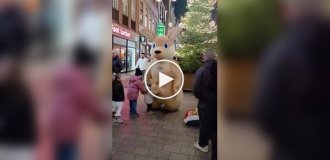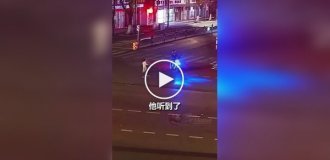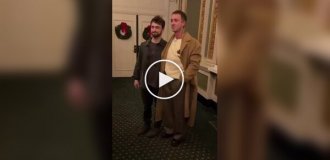Bright because of poverty: how the street in the tango family became completely colorful (7 photos)
A street called Caminito is located in Buenos Aires, the capital Argentinians call it the brightest street in the city, and perhaps in the world. All the houses here are painted in different bright colors, there are many paintings, graffiti, etc different sculptures. The place has long been a favorite of tourists, but initially (yes, сейчас) this is a very poor district - this is the secret of its diversity. 
The fact is that the houses are built from cheap materials - in mainly wooden boards and corrugated metal. All this for it had to be painted for safety (to prevent it from rotting), and usually because of poverty they took the remains of paints in the local port - what was left ship painting.
Since we had to make do with what was left, the colors were always different. But this worried the owners of the houses less everything, the main thing is to decorate it. 
That's how multi-colored houses appeared. It was in the 19th century, and already later, in the next century, this quarter began to be inhabited by artists and musicians, they "finished the job", glorified both the street and the whole district La Boca, in which it is located.
Let us remind you that La Boca is considered a tango family, and one of the of classical works in this style is called Caminito (written in 1926). And many are sure that the street is named in honor of tango, and others - that tango is named after a street. 
The very word Caminito is translated as "path, small". path" - so the street could easily be called that, but also for the song it's a good name. Who is right is probably not so important, the second is interesting.
In 1954, the one located at the end of the street was closed the railway station, where the residents of the street also worked Fireplace After some time, the whole district remained abandoned, and then generally turned into a dump. 
Its revival is associated with the name of the artist Benito Quinkel Martyna, who spent three years repainting the walls of the houses facing the street are in bright colors. And after that the street gained a new life and became what it is now.
This work glorified Benito Quinkel Martin as the best "port artist" and made it one of the most popular Argentine artists painters (not only this, of course, his paintings are quite successful exhibited in different museums). 
His biography is also very interesting - starting with the fact that His exact date of birth is still unknown. The point is that he was foster child - on March 20, 1890, he was left in the orphanage with a note, where it was reported that the boy was baptized and his name was indicated. Quinkel – this is a surname that he took from his stepfather (in the Spanish manner – in the original it is rather Chinchella).
It is also interesting that Benito was a friend of the author of the same Tango Caminito, whose name was Juan Diaz Fliberto. 
Benito Quinkel Martin / Juan Diaz Fliberto
Maybe this is what the artist took up such a difficult task to restore an abandoned street. And maybe not - all the same, it was most likely a city order and a completely complete one work But it turned out to be symbolic.
The main thing is that the street is alive, as noted in many guidebooks, reflects the true spirit of Buenos Aires. What is in this spirit? Fun, absence of depression, love and poverty - it is no accident that the street is became a haven for artists and musicians. 
Well, tourists have something to look at. It can be found here the most unusual restaurants of the Argentine capital will listen to street food musicians, buy souvenirs and take original photos on against the background of funny sculptures placed both on the street and on balconies and in the windows of multi-colored houses, and to dance the tango.





















